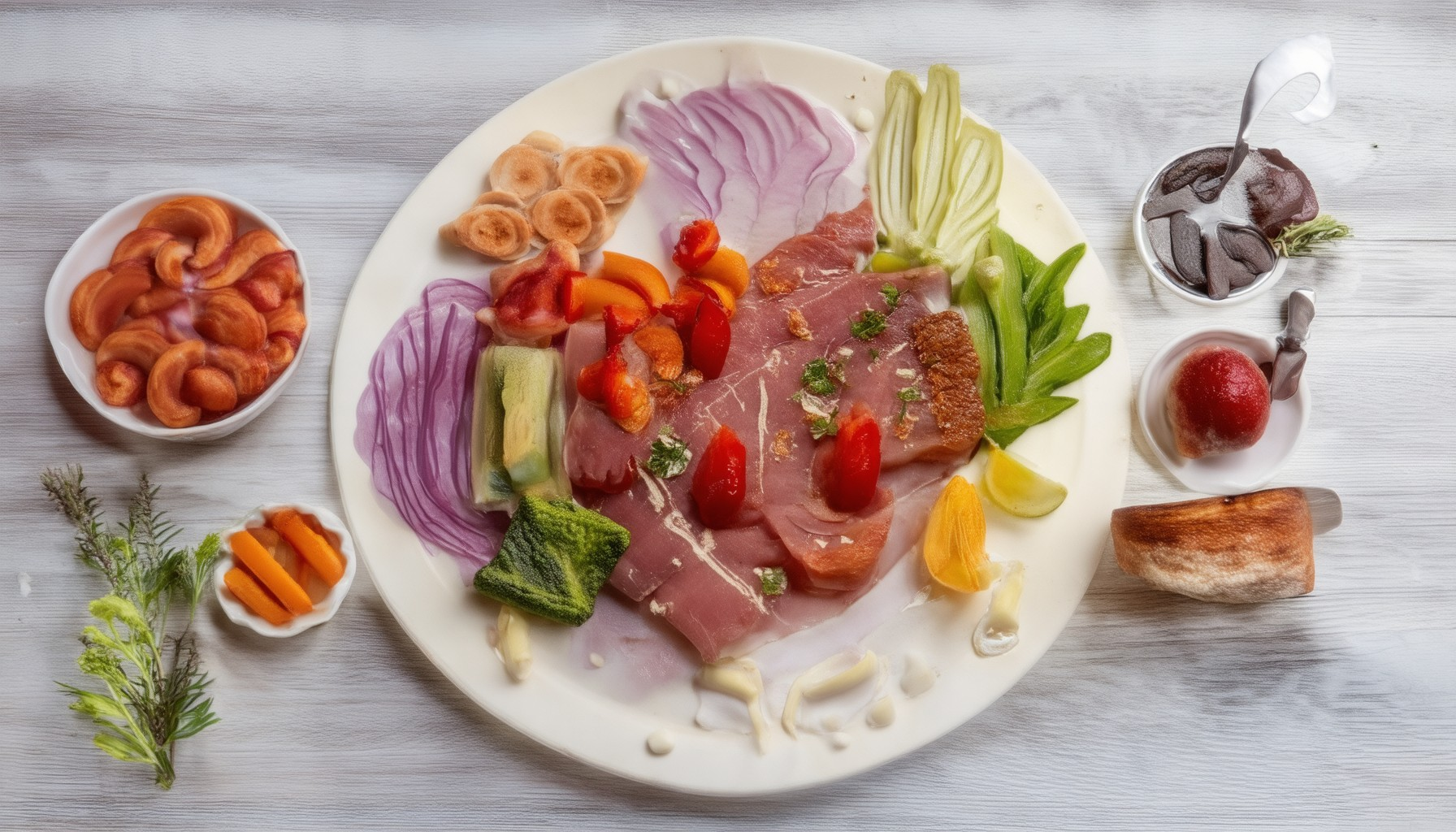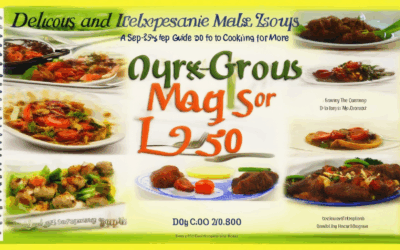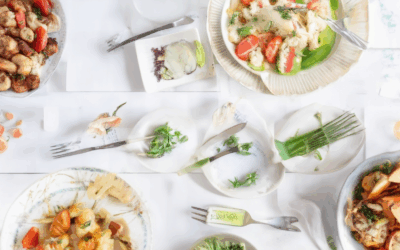Transform your dishes into visual marvels with expert-level food presentation tips that elevate every meal. Whether you’re whipping up a weekday feast or preparing for an elegant gathering, mastering the art of food presentation can redefine how your dishes are perceived. From crafting stunning platters to employing clever techniques, discover how to turn ordinary meals into extraordinary experiences. Explore essential strategies, learn valuable plating secrets, and gain insights into creating captivating culinary displays that delight both the eyes and the palate. With these proven tips, you’ll be armed with the knowledge to present food in a way that wows anyone who sets eyes on it, whether in a casual setting or a high-end dining establishment.

Top 5 Food Presentation Techniques
Presenting food in an appealing manner enhances both the dining experience and visual appeal. Here are five effective techniques to elevate your food presentation:
- Plating Technique : Arrange food artistically on the plate, considering colors, shapes, and textures. Use contrasting colors to create visual interest and balance the meal.
- Garnishing : Enhance dishes with fresh herbs, edible flowers, or microgreens. This adds a decorative touch and freshness to the plate.
- Color Theory : Utilize color psychology to evoke certain emotions. For example, red meats pair well with deep red sauces, while vibrant vegetables can brighten fish dishes.
- Layering : Stack ingredients to create vertical interest, such as layered desserts or salads with varied textures and flavors.
- Texture Play : Incorporate contrasting textures—crispy, creamy, soft, or chewy—to engage the senses and make the dish more exciting.
By mastering these techniques, you can transform ordinary meals into extraordinary experiences. Remember to let your creativity guide you while keeping the flavors and ingredients at the forefront of your presentation.
How to Improve Your Food Presentation Skills
Presenting food effectively involves attention to detail, creativity, and understanding of basic culinary principles. Here are some practical steps to enhance your food presentation:
- Color Theory in Plating
- Use complementary colors to create visually appealing plates. Red and green are excellent choices due to their contrast.
- Layer colors to guide the eye, making the dish more interesting and balanced.
- Garnishing Techniques
- Add fresh herbs like parsley, basil, or cilantro for a burst of color and aroma.
- Incorporate edible flowers for a sophisticated touch, available from specialty stores or online.
- Plating Techniques
- Drizzle sauces like reductions or vinaigrettes over dishes for added elegance.
- Create foams using whipped liquids such as egg whites for a light, airy texture.
- Carving and Slicing
- Stack ingredients vertically to add height and visual interest.
- Use an au gratin knife for precise, even slicing of meats like roasts.
- Styling Elements
- Apply textures using tools like cookie cutters or a blowtorch for caramelized sugars.
- Experiment with shapes and patterns to add artistic flair.
- Plating Ideas
- Balance flavors, textures, and colors on each plate.
- Consider portion sizes and spacing to avoid overwhelming the senses.
- Mise en Place
- Prepare all components in advance to ensure efficiency and consistency.
- Arrange ingredients strategically to highlight the dish’s features.
- Dietary Considerations
- Adapt presentations for vegetarian or gluten-free options by substituting ingredients.
- Ensure alternatives are visually appealing and maintain the dish’s integrity.
- Utensil and Servingware Selection
- Choose utensils and servingware that complement the dish and occasion.
- For example, use a slate board for charcuterie or a white plate with a gold rim for desserts.
- Feedback and Iteration
- Seek constructive feedback from others to identify strengths and areas for improvement.
- Be open to criticism and use it to refine your presentation techniques.
- Timing and Preparation
- Balance preparation and assembly to maintain freshness and texture.
- Understand when to plate certain elements ahead of time and when to finish just before serving.

Three Key Tips for Plating Food Like a Pro
1. Balance Color and Contrast
When plating food, consider the visual appeal by balancing colors and textures. Darker foods can make smaller portions look more substantial, while vibrant colors draw the eye. Use contrasting colors to create a striking yet harmonious composition.
2. Pay Attention to Texture
Texture plays a crucial role in the dining experience. Combine crisp vegetables with soft cheeses or creamy sauces to create a satisfying mouthfeel. This balance enhances both visual and taste sensations.
3. Mind Your Portion Sizes
Portion sizes matter both for presentation and perception. Larger portions may seem more generous, while smaller ones can highlight delicate flavors. Adjust based on the dish and its intended impression.
Remember, presentation is about storytelling. By focusing on these details, you transform meals into memorable moments. Explore more tips and recipe ideas on our website .

What Are the 5 Guidelines of Plating?
We believe that plating is an art form that enhances the dining experience by presenting food in a visually appealing and harmonious way. Here are our five key guidelines for effective plating:
1. Balance and Harmony
A great plate balances color, texture, shape, and flavor. Consider the visual appeal of the dish while ensuring each element complements the others. For instance, a vibrant salad might feature crisp greens, colorful fruits, and a tangy dressing, creating a balanced and satisfying composition.
2. Color and Contrast
Color plays a crucial role in making a dish attractive and appetizing. Use contrasting colors to create visual interest, such as pairing deep reds with bright greens or rich browns with pastel pinks. This not only makes the dish more appealing but also adds depth to the overall presentation.
3. Texture and Shape
Don’t forget about texture! A dish with varied textures—crispy, creamy, soft, and chewy—creates a more interesting mouthfeel. Experiment with different shapes too, like stacking ingredients in towers or arranging them in circular patterns, to add a unique touch to your plates.
4. Seasonal and Local Ingredients
Highlight the seasons by incorporating locally available ingredients. Fresh, seasonal produce adds freshness and uniqueness to your dishes. For example, use ripe tomatoes in summer salads or roasted squash in autumn dishes to showcase the best of what’s available.
5. Flavor and Aroma
Flavor is king, but don’t overlook the power of aroma. Scent plays a significant role in perceived taste, so make sure each dish has a pleasant fragrance. Whether it’s the aroma of freshly baked bread or the scent of aromatic herbs, it enhances the dining experience.
By following these guidelines, you can transform ordinary meals into extraordinary experiences. Remember, plating is not just about food—it’s about creating memories and bringing people together through the joy of cooking and sharing.
Discover more culinary tips and recipes on our website!
How to Present Appetizers Attractively
To present appetizers attractively, focus on creativity, presentation, and visual appeal. Here are some effective strategies:
- Use Colorful Platters: Opt for vibrant or patterned platters that complement the food’s colors. White or black plates often work well for appetizers.
- Arrange Ingredients Artfully: Arrange ingredients in a visually balanced composition. Consider mounding cheeses, placing citrus wedges, or drizzling sauces artistically.
- Add Garnishes Thoughtfully: Enhance each appetizer with fresh herbs, edible flowers, or a sprinkle of nuts for texture and visual interest.
- Consider Presentation Techniques: Use techniques like stacking slices of avocado or tomato on cucumber bases for a polished look.
- Pair with Matching Dishes: Serve appetizers on small plates or appetizer-specific dishes to keep portions controlled and visually appealing.
- Incorporate Textural Elements: Combine crunchy textures (like chips or crackers) with soft or creamy components for a satisfying mouthfeel and visual contrast.
- Use Lighting Effectively: Highlight the dish by placing it near lighting sources, whether natural or decorative, to draw attention to the presentation.
- Craft Compartmentalized Plating: Divide the plate into sections using ingredients or borders to guide the eater through each component of the appetizer.
- Be Mindful of Balance: Ensure the appetizer is visually balanced by incorporating elements of color, shape, and size.
Remember, the goal is to make the appetizer not only delicious but also a delightful experience for the eyes and palate. With thoughtful preparation and presentation, your appetizers will stand out as works of art!

What to Avoid When Plating
- Balance Colors Carefully: Avoid monochromatic plates. Balance colors to create an appealing visual balance, ensuring each component complements the others.
- Avoid Imbalanced Portions: Ensure portions are neither too large nor too small. Maintain a harmonious proportion between food and plate size.
- Prevent Texture Overload: Mix textures to add interest. Avoid dishes that are too mushy or too crunchy, aiming for a varied and pleasing texture profile.
- Avoid Asymmetrical Arrangements: Keep plating symmetrical for a polished look. Symmetry enhances professionalism and balance in your presentation.
- Steer Clear of Overcrowding: Avoid piling excessive food on the plate. Too much can disrupt the visual appeal and eating experience.
- Minimize Color Clashes: Choose colors that complement each other. Use a color wheel guide to prevent overwhelming contrasts and enhance harmony.
- Match Plate Size to Food: Select the appropriate plate size based on the meal. Proper sizing ensures the dish looks inviting and is easier to serve.
This structured approach ensures your plating efforts result in a visually appealing and enjoyable dining experience.





0 Comments